


Urs Fischer
CHAOS #501
Introducing CHAOS, 501 original works in the form of unique digital sculptures. Each NFT in CHAOS consists of two unique objects (an array of familiar objects to people today) that have been 3D scanned. They are set on a colliding course in motion and orbit. The sculptures, operating as an archeology of the present, are intended to manifest in any format that is capable of displaying, playing or showing a 3D sculpture in motion. The culmination of the project is CHAOS #501, a single entity NFT uniting all one-thousand objects represented in #1-#500.

Wayne Mcgregor
Torus
Directed by British fashion photographer Nick Knight of SHOWStudio, Torus is a film on human connection and loneliness featuring choreography by Wayne McGregor and styling by Norwegian designer Fredik Tjærandsen. Performed by Company Wayne McGregor, Torus shows dancers wearing inflatable balloons designed by Tjærandsen, orbiting in darkness as isolated entities, occasionally lit as they transition through a temporal universe, a mirror to the life that many are only passing through, barely connecting.
Parse/Error
ISS Tracker
El ISS Tracker sigue a la Estación Espacial Internacional en tiempo real mientras viaja alrededor del mundo, rastreando su órbita y apuntando a su posición en el cielo en todo momento. Un proyecto inspirado en mi fascinación por el espacio, que siempre ha estimulado la imaginación de la humanidad. Un tributo a la destreza técnica de la ISS y a los astronautas a bordo. La Estación Espacial Internacional tarda aproximadamente 92 minutos en dar la vuelta a la Tierra. El ISS Tracker utiliza parámetros orbitales de dos líneas, o TLE (para elementos de dos líneas), para determinar la órbita de la estación y calcular su posición. El azimut y la elevación se calculan contra las coordenadas GPS del observador, la fecha y la hora, para definir la dirección al punto. La posición de la ISS se vuelve a calcular cada 10 segundos y se actualiza la dirección señalada por la mano del ISS Tracker.
Parse/Error
ISS Tracker
L’ISS Tracker suit en temps réel la Station Spatiale Internationale dans sa course autour du monde, en suivant son orbite et en pointant du doigt sa position dans le ciel à tout instant. Un projet inspiré par ma fascination pour l’espace, qui a toujours stimulé l’imagination de l’espèce humaine. Un hommage à la prouesse technique que représente l’ISS, et aux astronautes à son bord. Il faut environ 92 minutes à la Station Spatiale Internationale pour faire le tour de la Terre. L’ISS Tracker se base sur les paramètres orbitaux à deux lignes, ou TLE (pour Two-Line Elements), pour déterminer l’orbite de la station et calculer sa position. L’azimut et l’élévation sont ensuite calculés par rapport aux coordonnées GPS de l’observateur, la date et l’heure, afin de définir la direction à pointer. La position de l’ISS est recalculée toutes les 10 secondes et la direction pointée par la main de l’ISS Tracker est mise à jour.
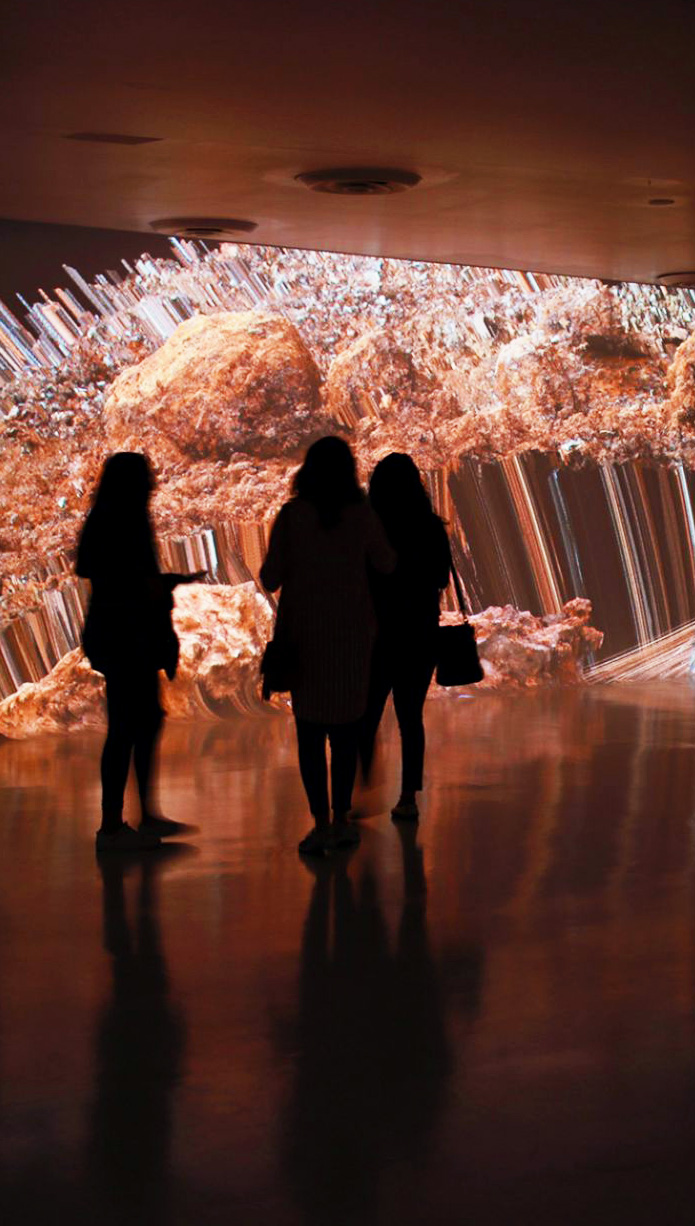
François Quévillon
Pyroclastic Trails
The work shows volcanic rocks rising from the ground that create trails of pixels. The layering of tezontle is generated by a software by modifying the size, speed, trajectory and selection of rocks from a database of photogrammetric 3D scans. Made in November 2019 in collaboration with UNAM’s Instituto de Geografía during a residency for Connecting the Dots, the work is related to research on the impact of mining activities in extinct volcanoes of Sierra de Santa Catarina located south of Mexico City. The video also shows Orbiting Bauxite and 3542 of the Meteors body of works.

TOMÁS SARACENO
In der Umlaufbahn
Auf dem Territorium der Kunstsammlung Nordrhein-Westfalen in Deutschland ist eine riesige Installation “In Orbit” mit einer Höhe von über zwanzig Metern gewachsen. Präsentiert von Tomás Saraceno, berühmt für seine faszinierenden utopischen Projekte, ist es als eine Reihe von Netzwerken konzipiert, die durchquert werden können. Die Struktur von drei Ebenen ähnelt Wolken und nur die Wagemutigsten können hoch zur Glaskuppel klettern. Die Installation “In Orbit” ist das größte aller Werke des Künstlers, und es dauerte drei Jahre enger Zusammenarbeit mit Ingenieuren, Architekten und Arachnologen, um sie zu entwerfen. Bau mit einer Fläche von 2.500 qm. Meter wiegen nur 3.000 Kilogramm und lösen die Grenzen zwischen Kunst und Wissenschaft auf.

Thom Kubli & Prof. Hiroshi Ishii
Orbiting
Orbiting features floating, machine-generated sculptures. The 3-D-printed objects — made from an ultra-light material — are injected with helium and released into the air as they become buoyant. As the ascending sculptures rise toward the ceiling, they enter the flow of a thermal stream and begin their gentle orbit. While floating, these ethereal objects participate in a continuously changing series of celestial movements.
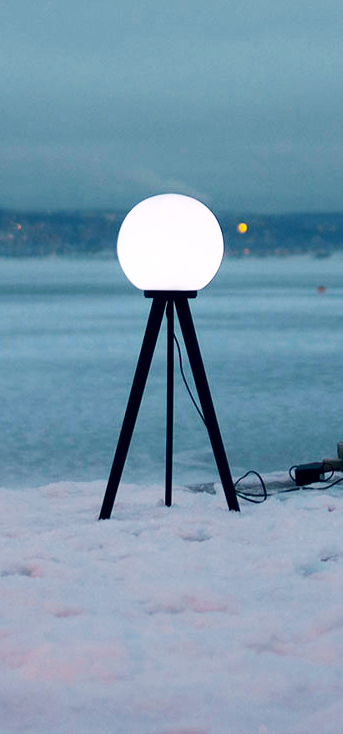
Einar Sneve Martinussen, Jørn Knutsen and Timo Arnall
Immaterials: Satellite Lamps
“Satellite Lamps shows that GPS is not a seamless blanket of efficient positioning technology; it is a negotiation between radio waves, earth-orbit geometry and the urban environment. GPS is a truly impressive technology, but it also has inherent seams and edges.”

Christian Babski, Stéphane Carion, Christophe Guignar & Patrick Keller
Satellite Daylight
Satellite Daylight is an interactive light installation formed by a trapeze of 24 high-voltage neon tubes tapering upwards, created by fabric | ch – a studio for architecture, interaction and research dedicated to investigating contemporary space based in Lausanne. The installation is connected to data collected in real time from online weather stations and meteorological satellite maps, which therefore translate actual global light conditions picked up by satellites orbiting the earth at the latitude of Basel into an endless loop of perceivable electrical intensity.

Quadrature
Orbits
“The aesthetics of man-made objects in space, their appearance and especially their orbits are transformed into a minimal audiovisual performance, showing the poetic dance satellites and their trash perform while revolving around us. Seemingly chaotic paths mutate to amazing patterns of an almost organic nature—all of it due to pure physical necessity. When we started working with global satellite data, their information was based on a website maintained by the US Air Force. Yet after some time, based on information from the Union of Concerned Scientists, we discovered that some objects were missing. Fortunately the data on classified satellites is generated by enthusiastic amateur astronomers observing the night skies.” Quadrature

Guillaume Marmin
TIMÉE
In roughly 360BC, Plato shared his dialogue Timaeus, in which he imagined the universe as a geocentric system, including a concept called Music of the Spheres where each planet had its own sonic tone based on its unique orbital revolution. The entire system was divided into an octave, a fifth, a fourth, and tone, and as all the planets revolved around the Earth, the solar system would comprise a perfect musical score.

Karlheinz Stockhausen
SONNTAG aus LICHT
Sonntag aus Licht takes as its subject our solar system and the relationships of all the planets that orbit the sun. In this opera, the earth and life on it is represented as the result of the union of light and water. These two elements are presented in the first scene, and the rest of the opera celebrates the evolution of life, of plants, animals, humans, and above all this the planets, moons, and heavenly constellations. The opera has a pronounced ritualistic and meditative character, with very little that can be described as dramatic action.

kite & laslett
Orbit
Orbit is a kinetic light installation designed for a former railway tunnel. A series of rotors of increasing diameter and speed are positioned along the 80m space, projecting laser beams into the void. Their orbiting constellation targets towards a circular plane at the end of the tunnel.

TOMÁS SARACENO
توماس ساراسينو
托马斯·萨拉切诺
トマスサラセーノ
in orbit
Гигантская инсталяция «In Orbit» высотой более двадцати метров выросла на территории Художественного собрания земли Северный Рейн-Вестфалия в Германии. Представленная Томасом Сарацено (Tomás Saraceno), известным захватывающими утопическими проектами, она выполнена в виде множества сетей, по которым возможно передвижение. Конструкция в три уровня напоминает облака и лишь самые смелые могут подняться высоко к стеклянному куполу. Инсталляция «In Orbit» является самой крупной среди всех работ художника, а на ее проектирование ушло три года тесного сотрудничества с инженерами, архитекторами и арахнологами. Конструкция площадью 2,500 кв. метров весит всего 3,000 килограмма и растворяет границы между искусством и наукой.

Quadrature
Positions of the Unknown
At the very beginning of space exploration the infrastructure to monitor the whole sky was not yet developed. So in order to find out whether foreign countries launched objects, the US government started to train citizens to observe and detect possible artificial satellites. Scattered over the allied world, these amateur scientists played a crucial part in keeping track of all men-made technology orbiting earth, until “Operation Moonwatch” was discontinued in 1975 […] “Positions of the Unknown” locates the current whereabouts of these mysterious objects by simply pointing at them as they revolve around Earth. Missing the legal proof, those unidentified artefacts remain entities of pure speculation, secret companions of us and our planet. Even so they have been sighted several times and their ubiquitous presence is therefore somehow validated, they linger in a state between existence and non-existence. Quadrature’s 52 small machines constantly follow their paths and serve as silent witnesses of the unknown.

Steven Chilton Architects
SATELLITES
“By 2020, it is predicted some 6000 satellites will be orbiting the earth. From climate monitoring to communications, satellites are functioning to open up new horizons for us all. Our proposal for the Dubai Expo UK Pavilion, SATELLITES, aims to articulate and celebrate Britain’s unique contribution to this remarkable milestone, demonstrating how imagination, innovation and collaboration can change and improve lives around the world.” Steven Chilton Architects

Lara Bohinc
Orbit Chair in Black
In the collection, Lara Bohinc develops her stellar themes, finding inspiration in planetary and lunar orbits, whose gravitationally curved trajectories drive the lines and shapes of the chairs. Constructed from thin square rod, the chairs are elegant, minimal and delicate. They are finished in galvanised steel and wool fabrics by Kvadrat.
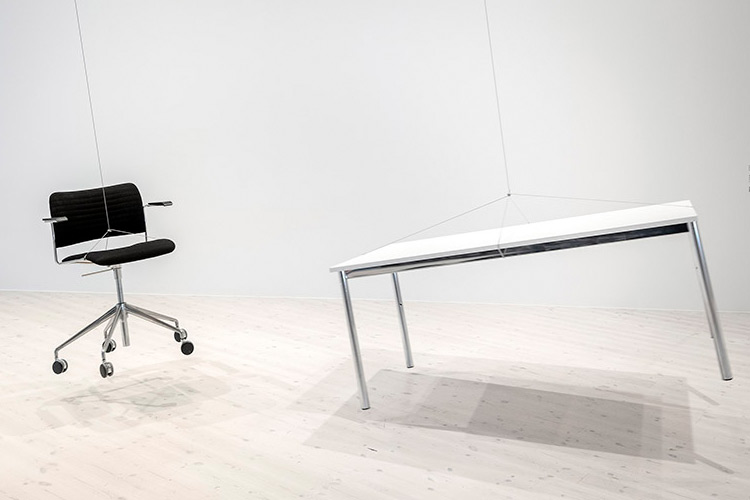
julius von bismarck
Freedom Table & Democracy Chair
Suspended from the ceiling of the exhibition space, a blue office chair and a simple table each swing in a circular orbit. At times the movement of table and chair is closely aligned, at other times out of sync. Moving in a rhythm of dance-like accompaniment, the two objects seem to have attained weightless freedom.
The table and chair originate from the gallery. Computer-operated motors determine their precise circular paths, which have marginally deferred frequencies.

Alex Schweder and Ward Shelley
Уорд Шелли и Алекс Шведер
in orbit
“In Orbit,” è un’installazione artistica che consiste in una ruota gigante per criceti alta otto metri: la ruota diventerà per dieci giorni la casa di due artisti di New York , Ward Shelley e Alex Schweder, I due non scenderanno mai dalla ruota per tutti i dieci giorni dormendo, mangiando e trascorrendo le intere giornate lì dentro.
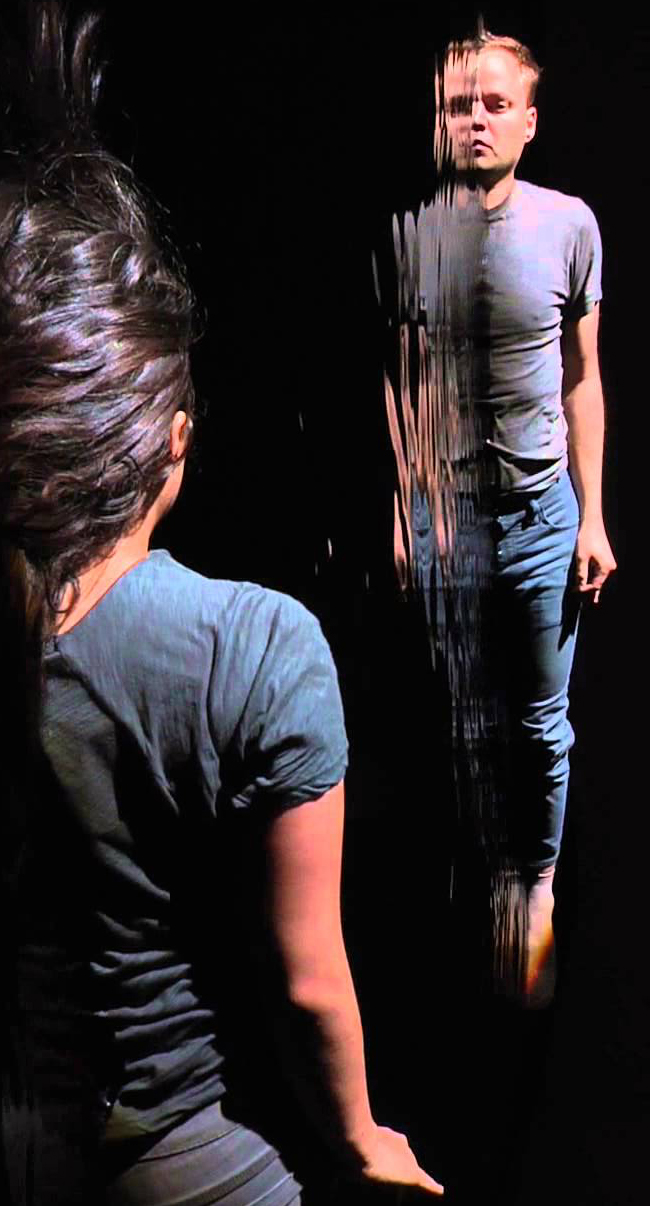
Jeremiah Barber
Other Half Orbit
The installation consists of a large reflecting pool with built-in topographies to hold our bodies horizontally at exactly half-submersion. The images of our bodies become completed by reflection, and a secondary reflection of our shadows is cast on the wall. In the performance, we host an unscripted conversation about Ingrid’s memory loss, dreams, identity, and the possibility that we may never know one another fully.

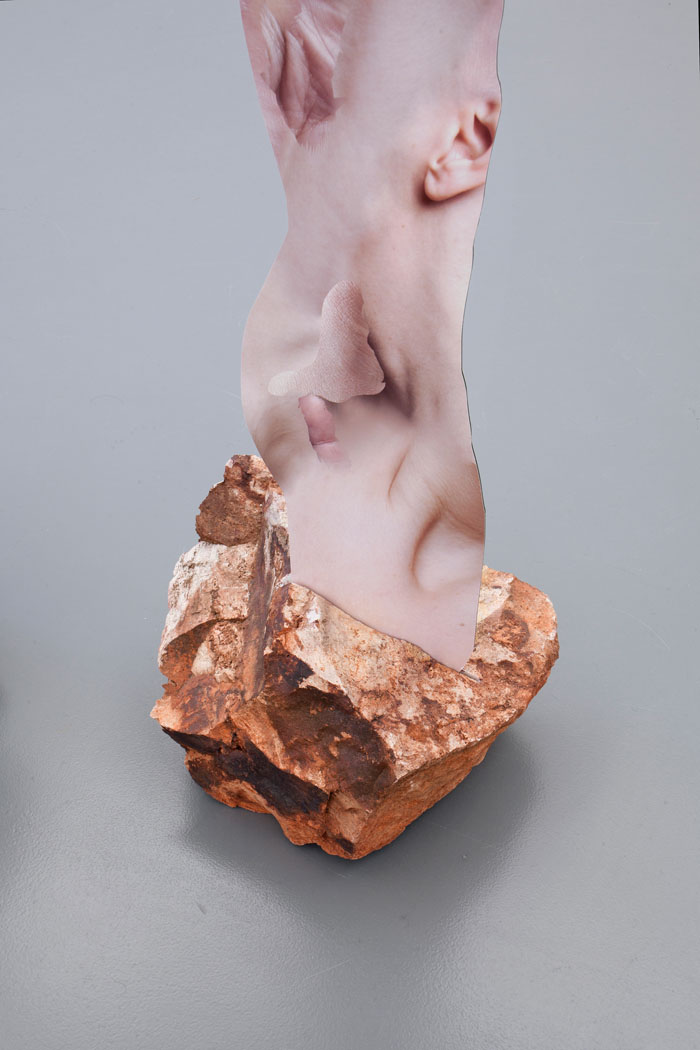
Rachel de Joode
“Rappresento gli otto simboli planetari sacri e arcaici in modo semplificato, usando artefatti umani moderni per decostruire il significato dei pianeti solari per la civiltà umana nel suo insieme, esaminando il significato del cosmo attraverso la mia realtà. Presento la mia ricerca etnografica umana universale in uno spazio grigio “neutro”: uno stile museologico, attraverso il quale posso collocare la tradizione storica e culturale in un microcosmo personale, creando una visione terrestre dello spazio e del tempo in un macrocosmo.
Questa serie è un’astrazione modernista che indicizza il sistema solare per me stesso al fine di cogliere la vita e, più specificamente, i fenomeni della mia vita nel tempo e nello spazio.
Utilizzando lo spostamento e la riclassificazione dell’interpretazione planetaria scientifica, culturale, storica e ontemporanea, il mio obiettivo, attraverso la visualizzazione, è quello di semplificare la concezione umana dei pianeti simili in orbita attorno al nostro Sole ”.

Alicja Kwade
Die Gesamtheit aller Orte
“It’s easy to trace the curves in Kwade’s perfectly placed bent tubing and piping, but it takes a second to realize that even the installation’s larger, solid objects—a door, a window, mirrors, iron gates, sheets of metal, and even a bicycle—not only travel on her orbits’ paths, but have also been altered (in some cases just barely) to conform to them. The white door’s slight curvature is hardly noticeable until you’re at close range. The imposing rusty gates are generously rounded. There’s an almost imperceptible bend to a door with an oval mirror. A few copper pipes in the outermost rings disappear into the gallery wall; in the very center of the installation, a two-euro coin, propped up on its rim, and a sharply curved sheet of metal face each other, mysteriously.”Kimberly Bradley

ANISH KAPOOR
阿尼什•卡普尔
アニッシュ·カプーア
Аниш Капур
Arcelor Mittal Orbit
Award winning London-based artist Anish Kapoor has been given the commission of a lifetime to design the spectacular new public attraction in the Olympic Park. The stunning artwork, to be entitled ‘The ArcelorMittal Orbit’, will ensure the Park remains an unrivalled visitor destination following the 2012 Games, providing the key Olympic legacy Mayor of London Boris Johnson envisaged for the East End.The breathtaking sculpture – thought to be the tallest in the UK – will consist of a continuous looping lattice of tubular steel. Standing at a gigantic 115m, it will be 22m taller than the Statue of Liberty in New York and offer unparalleled views of the entire 250 acres of the Olympic Park and London’s skyline from a special viewing platform. Visitors will be able to take a trip up the statuesque structure in a huge lift and will have the option of walking down the spiralling staircase.One of the world’s most distinguished contemporary artists, Turner Prize winning Anish Kapoor studied in London, where he is now based. He is well known for his use of rich pigment and imposing, yet popular works, such as the vast, fleshy and trumpet-like Marsyas, which filled the Tate’s Turbine Hall as part of the Unilever Series, the giant reflecting, pod like sculpture Cloud Gate in Chicago’s Millennium Park and his recent record breaking show at the Royal Academy, the most successful exhibition ever presented by a contemporary artist in London.